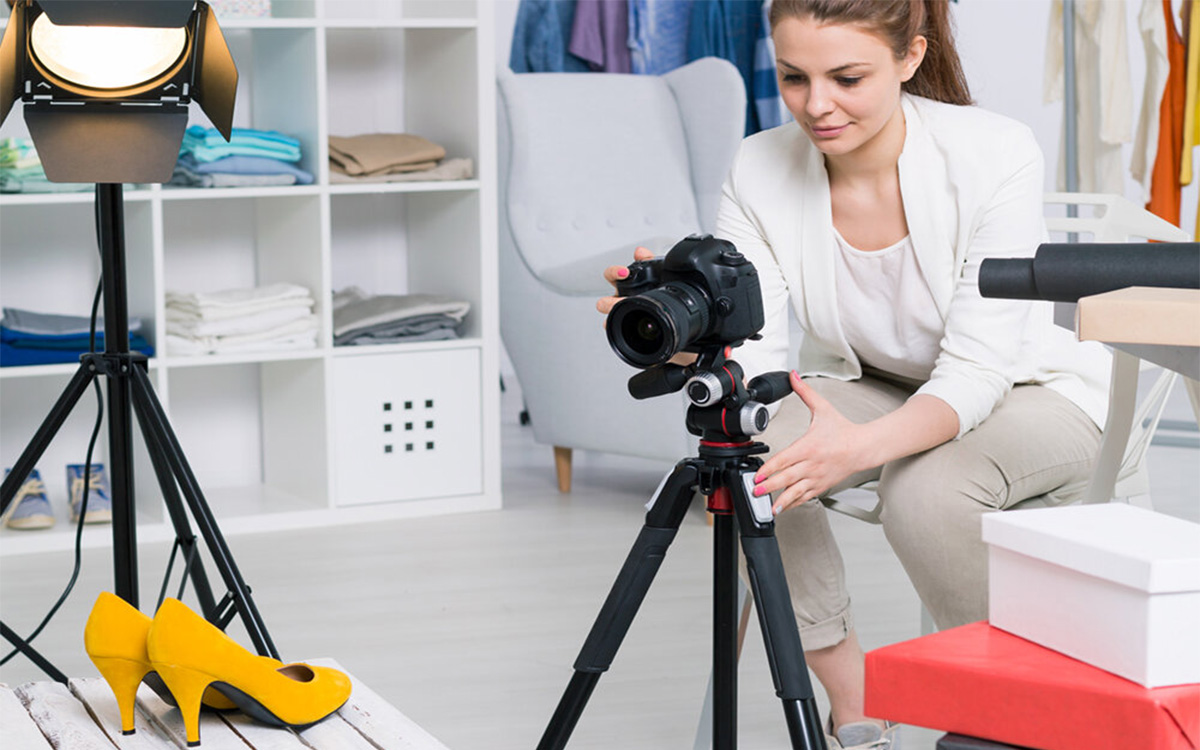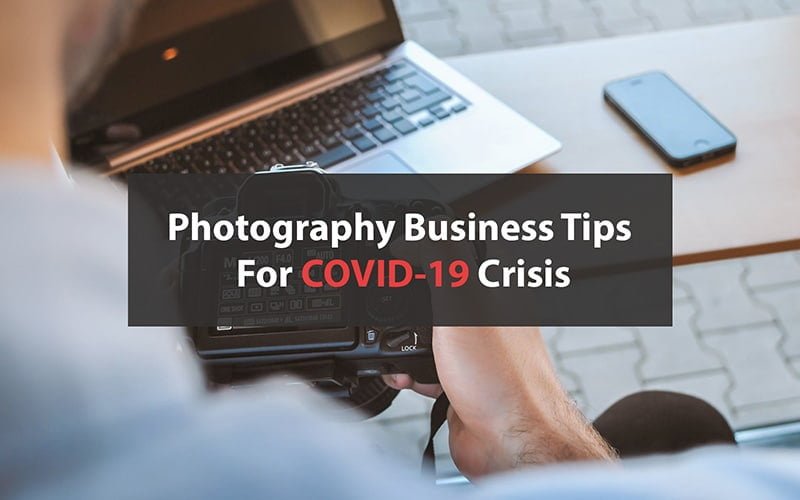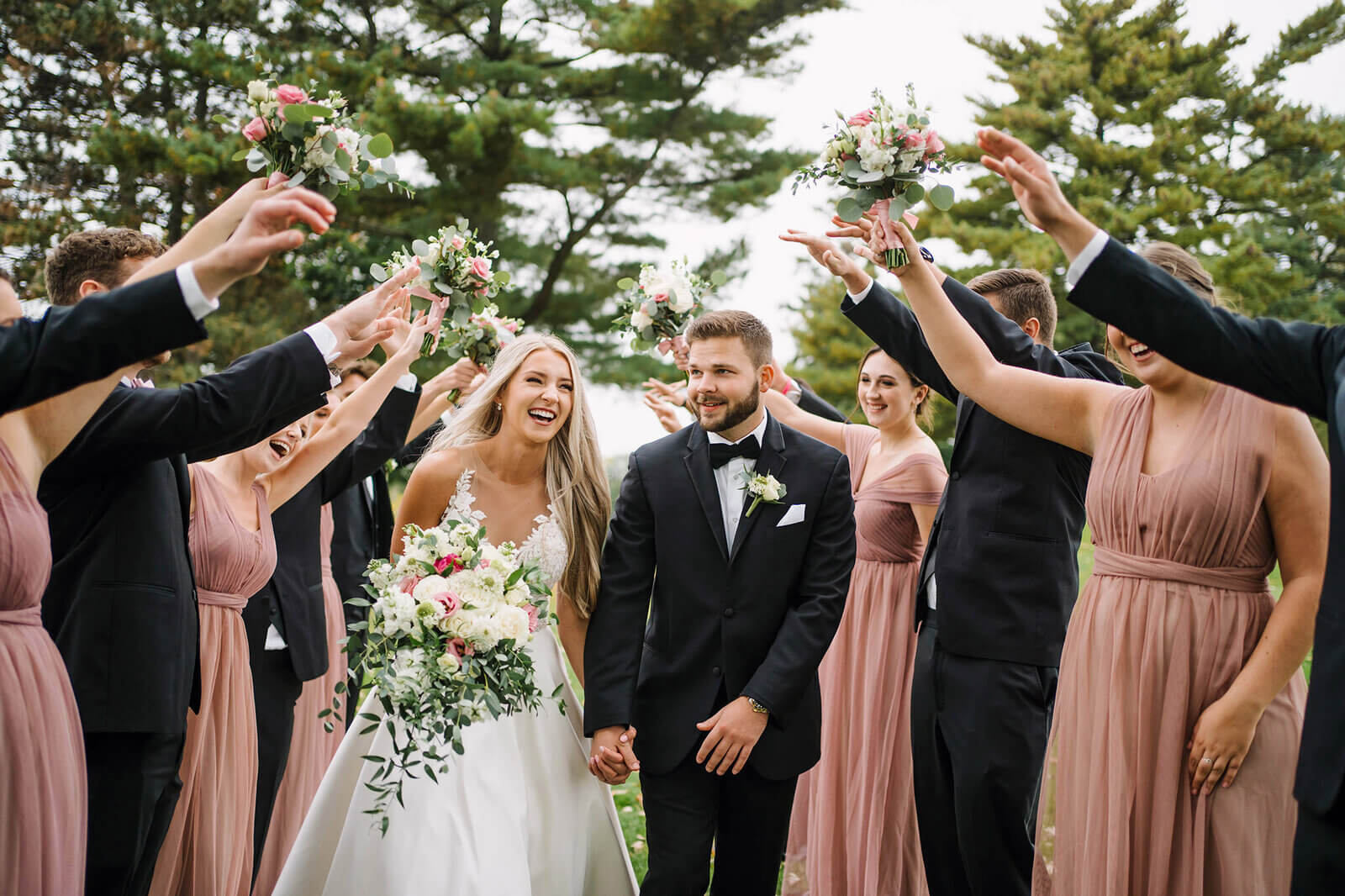Do you know?
An aspiring photographic journey will allow you to explore a variety of photographic styles. It sounds adventurous, right? So, if you gain more experience in a specific style, this adventure will mark your entry into the creative world.
Today, we will talk about portrait photography and headshot photography. As you know, portrait photography has a vast term in photography.
You might find the differences between portrait and headshot photography—regarded as the same—to be the most concerning. But if you go deeper down the thin-line comparison, you can look. So, we’re here to perfectly illustrate these differences for you.
Let’s get started.
What you’ll learn in this article
- 1 What is Portrait Photography?
- 2 What is Headshot photography?
- 3 Portrait vs headshot photography – Head-to-head comparison
- 3.1 Portrait vs Headshot: Subjects
- 3.2 Portrait vs Headshot: Style
- 3.3 Portrait vs Headshot: Intent
- 3.4 Portrait vs Headshot: Users
- 3.5 Portrait vs Headshot: Skill
- 3.6 Portrait vs Headshot: Market
- 3.7 Portrait vs Headshot: Camera
- 3.8 Portrait vs Headshot: Lens
- 3.9 Portrait vs Headshot: Background
- 3.10 Portrait vs Headshot: Posing
- 3.11 Portrait vs Headshot: Cropping
- 3.12 Portrait vs Headshot: Settings/Setup, Lighting
- 3.13 Portrait vs Headshot: Retouching
- 3.14 Portrait vs Headshot: Pricing & Packages
- 4 FAQs of Portrait vs Headshot Photography
- 5 Final Remarks
What is Portrait Photography?
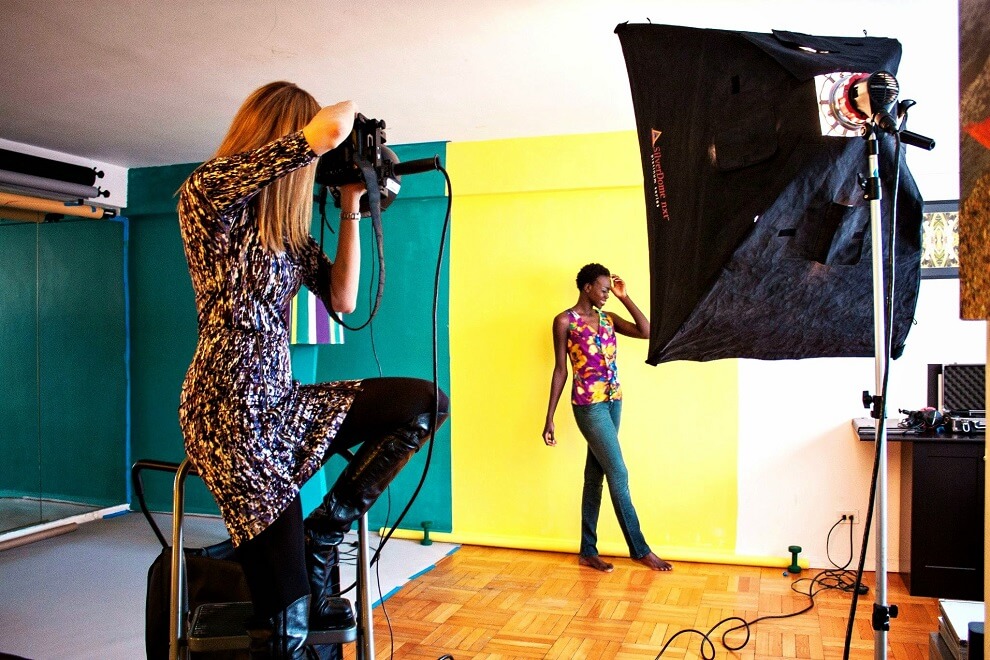
Portrait photography aims to convey the subject’s personality, identity, and essence through the use of backgrounds, lighting, and posing.
But it’s not as easy as it sounds! Just like any other art form, it can be hard to explain. If we clarify the topic, it can evoke a deeper level of feelings that can create a connection between the subject and the viewers. This photographic style is an example of the proper technique combined with creative expression.
Basically, less formal and more informative attire is preferred for portraits. It could be framed from the head up, from the waist up, or even show the entire figure of your subject.
Types of Portrait photography
Portrait photography is a vast genre in the photographic world. There we have a few core types of photography that you should know.
- Self-portraits
- Surreal portraits
- Lifestyle portraits
- Fine art portraiture
- Conceptual Portraits
- Traditional Portraits
- Environmental Portraits
- Street and candid portrait
- Glamour and Boudoir portraits
- Family, group, and couple portraits
What are the purposes of portrait photos taken?
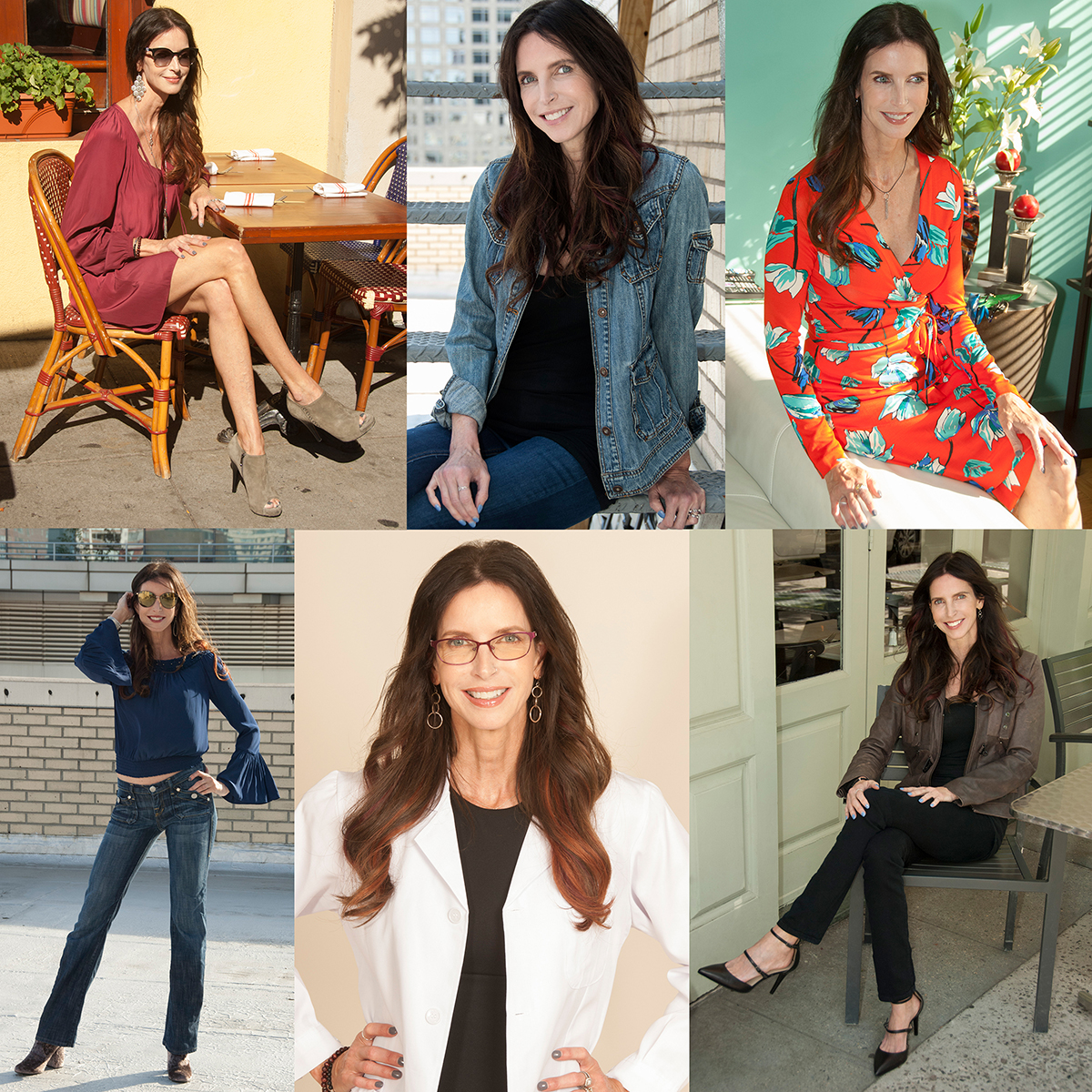
As you already know, portrait photography is not just for school or college events; its range has been expanded to special occasions such as weddings, commercials, and some sports and fashion events.
If we look deeper into the purpose, we can see that it simply depicts the essence of the subject(s) and conveys the surface meaning. This is the best photographic genre where both subjects and photographers are given the opportunity to express themselves.
Get the guide: Best poses for portrait photography
What is Headshot photography?
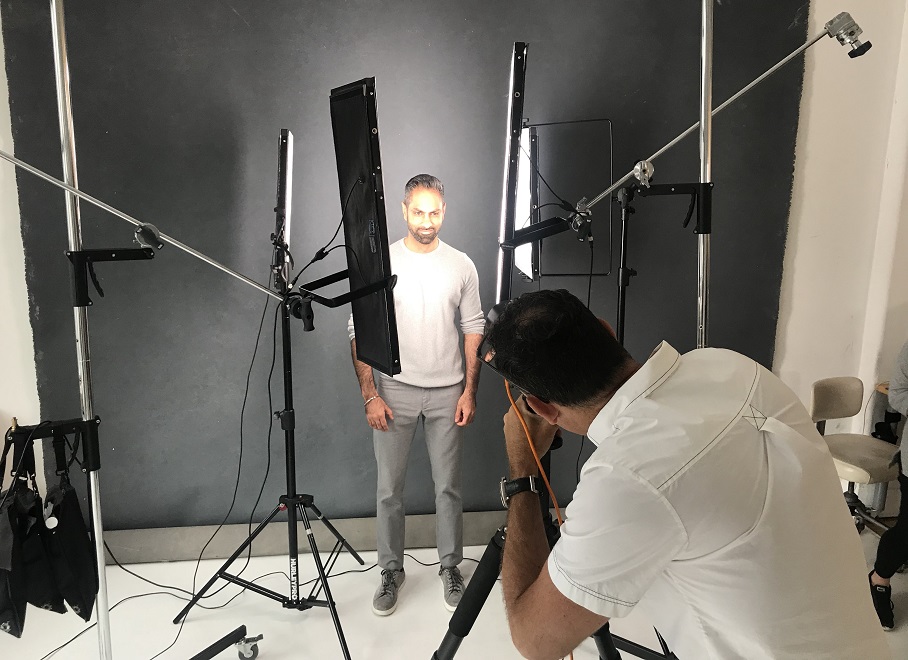
A headshot is primarily shot for the professional representation of a person. Back in time, headshots were just reserved for actors and models to find a perfect face throughout the hundreds of photos.
But in today’s social world, everyone needs to market themselves professionally for their LinkedIn or Facebook page. For example, businessmen take their headshots to use on profiles or to accompany articles about them. The same actors always need to up-tp-date their headshots for their portfolio. So, professionally, headshots make the most sense instead of portraits.
Types of Headshot photography
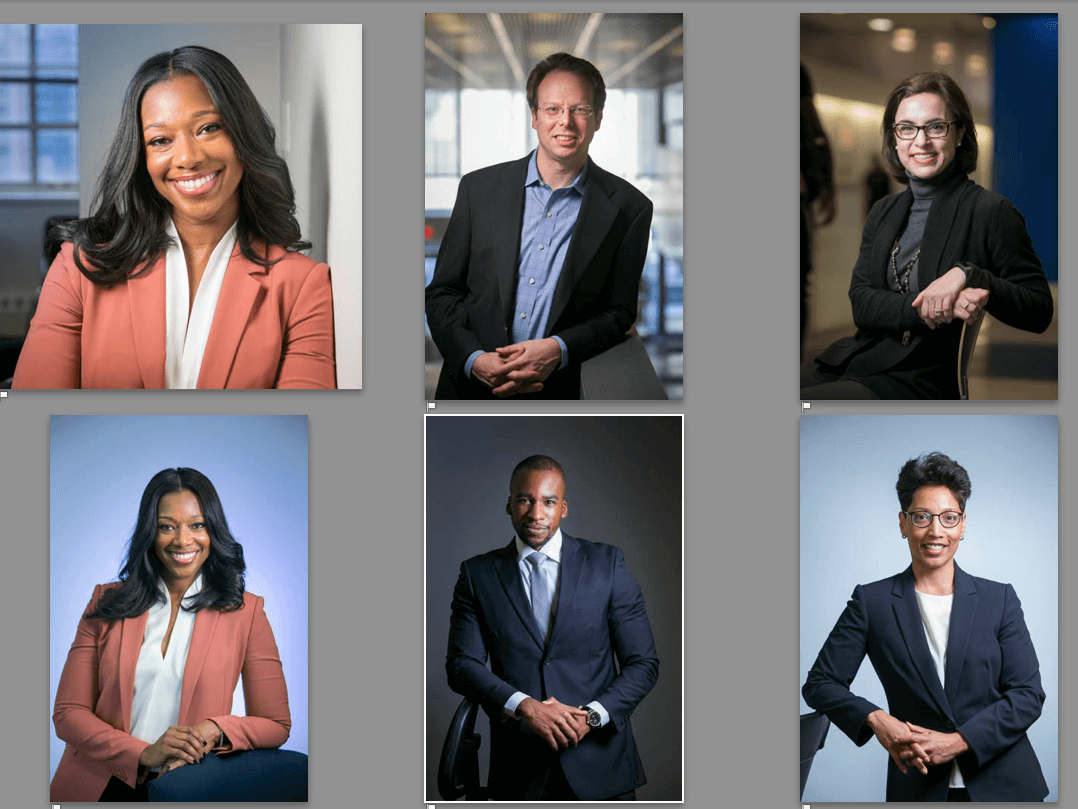
The most general headshot type is basically used for somewhat creative but mostly professional styles. These are-
- Acting Headshots
- Comedic Headshots
- Modeling Headshots
- Corporate Headshots
- Commercial Headshots
- Conference speaker headshots
Headshots are mostly taken for professional purposes. An up-to-date headshot image is, therefore, necessary if you hold a professional tag. The ideal time to take headshots is when you believe, you will need a professional portfolio for a job, business, or social media page.
Alternatively, if you’ve already had several headshots, keep updating them once or twice a year. However, if these headshots are for social media, update them more frequently—roughly once a month, since social media sites give new images more attention.
Don’t forget to read: How to choose a headshot photographer
Portrait vs headshot photography – Head-to-head comparison
Now let’s dive in here to find the core differences between headshots and portraits. This guide will give you a perfect and clear picture of what headshots and portraits are all about.
Portrait vs Headshot: Subjects
The core comparison between portraits and headshots is that headshots focus on a single subject, whereas portraits could be focused on multiple subjects. On the other hand, portraits share the story with the viewer through a creative mood, something more about the subject. For example, portraits are descriptive images that can be both professional and creative.
Portrait vs Headshot: Style
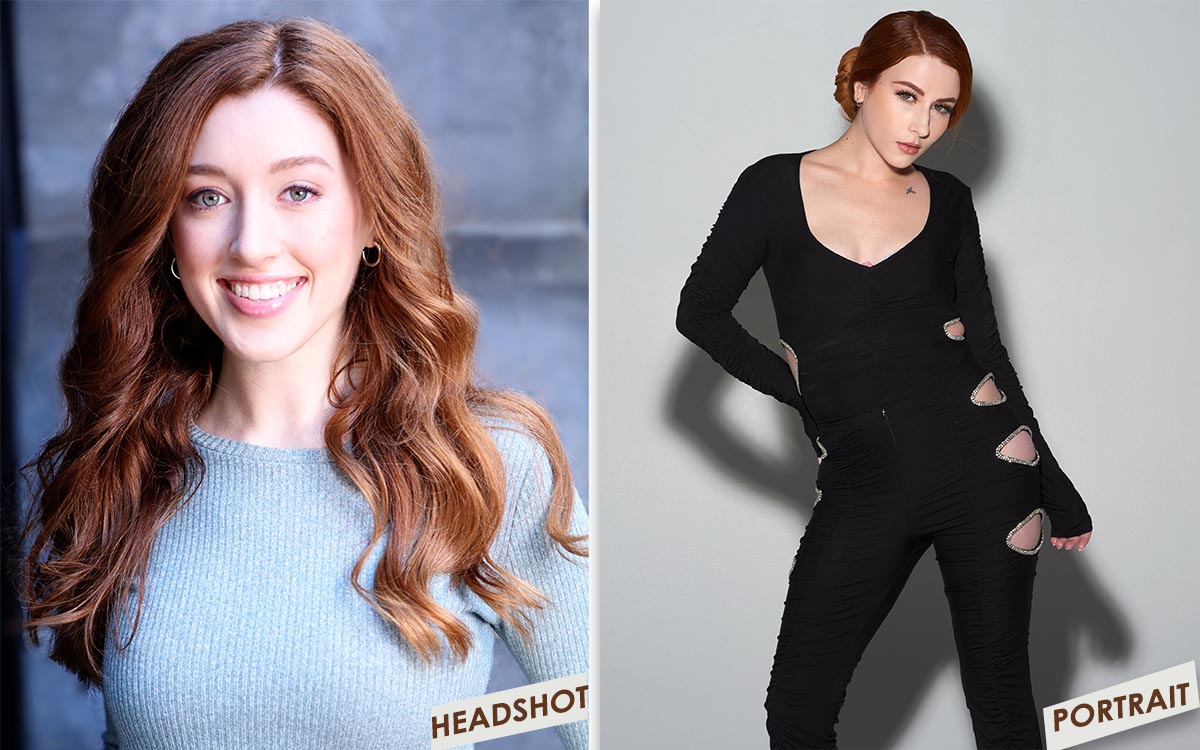
Whether you want to make your portfolio as a photographer or for business personnel, your creativity will grow through several portrait styles. That might be formal and even creative.
On the other hand, headshots make your subject more approachable and professional, so it just sticks to a formal style and applies only to corporate employees or business personas.
Portrait vs Headshot: Intent
A professional headshot will attract the right attention to create professional networking. If someone sees your profile for the first time or searches you on Google, it is important to have professional photos.
It is used for a variety of things, including business cards, advertisements, auditions, badges of identification, profiles on websites and social media, and other forms of identification. That might determine your goals, style, and most importantly, your personality.
Conversely, when we look at portraits, their intention goes beyond simply capturing the professional style and includes a little bit of creativity in photos. If we find the intention of portraits based on not just one purpose but diverse, they can be used for commercial marketing, modeling, fashion, tradition, or even professional.
Portrait vs Headshot: Users
When we figure out who the users of portrait and headshot photography are, you might find a limited number of users for headshots compared to the vast number of users in portrait shots.
For example, corporate company employees must shoot headshots, while both business and creative personnel choose portraits for specific reasons.
Portrait vs Headshot: Skill
If you’re interested in photographing portraits, you must acquire some must-have skills such as photo editing, framing, image manipulation, creativity, composition, technical skills, camera settings, digital photography, and so on.
However, there is no need for additional skills when discussing headshots because portrait photography is the genre, and headshots are merely a part of it.
Portrait vs Headshot: Market
If you’re thinking about the photography market, it will be worth about $10 billion by 2022.
But if we divide the market sizes for portraits and headshots, the portrait covers all businesses in the United States, from startups to market leaders. The overall statistics only included the portrait industry as a whole because headshots are merely a subset of that.
Portrait vs Headshot: Camera
When you get to the camera sections further down, decide which camera is for portrait photography and which one is for headshot photography. You might be getting confused, right? However, if you narrow your camera brand choices to Nikon, Sony, Fujifilm, or Canon, you will find your ideal camera.
The Canon EOS 90D, Nikon D780, and Sony Alpha 1 are a few portrait cameras that the majority of professional photographers recommend. When searching for a budget-friendly portrait camera, consider the Nikon Z5, Panasonic Lumix G85, and Canon EOS RP. On the other hand, you can pick from cameras like the Canon EOS R, Sony a7R IV, Nikon D850, and others when photographing a portfolio or an executive’s face.
Portrait vs Headshot: Lens
Every lens could be classified as a portrait lens. However, a medium telephoto lens works best for taking general portrait pictures. The ideal focal length range varies depending on the photographer but is typically between 85 and 135mm on full-frame cameras and 55 to 85mm on crop sensor cameras.
Another important element is to consider the wide aperture in the lens, which eliminates blur and distractions. Its faster shutter speed allows you to freeze the motion to capture the sharp details.
When it comes to considering a lens for headshots, the focal length should be at least 50mm for a full-frame camera. The most popular headshot captures a range of 70-20mm. You can even use your iPhone’s wide-angle lens to work wonders.
Portrait vs Headshot: Background
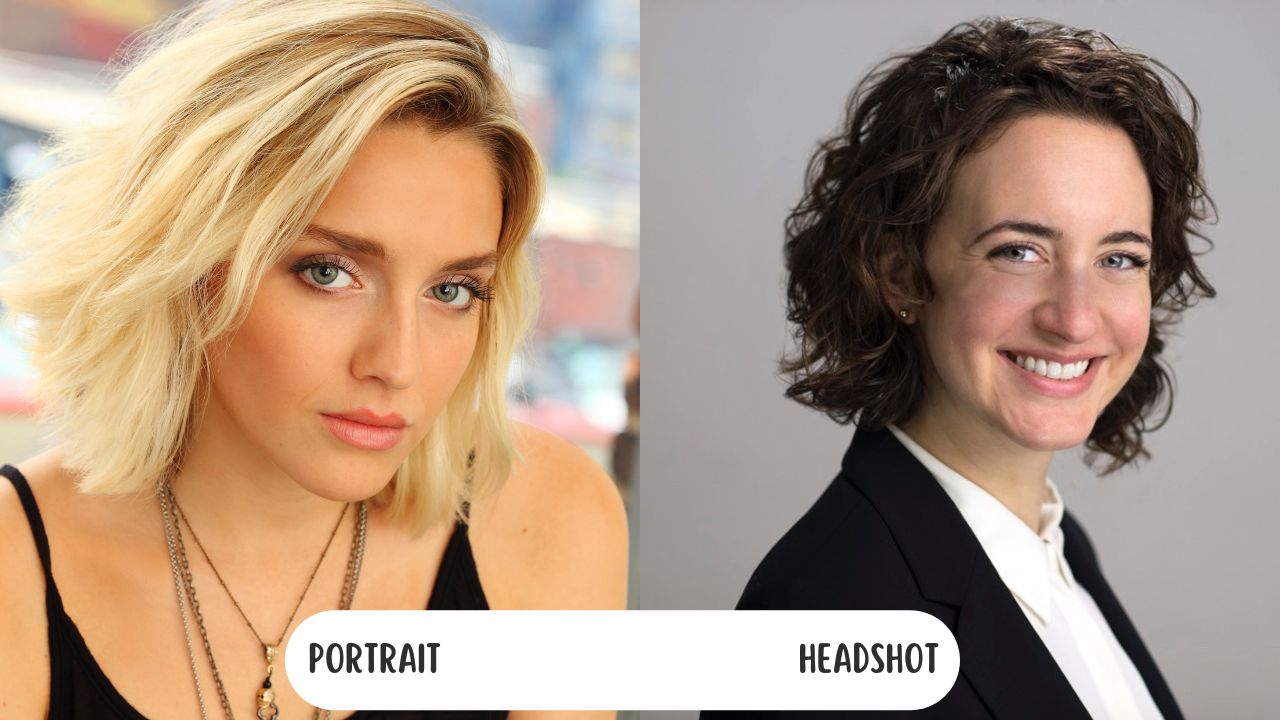
If you will be capturing the headshots, you don’t need to include props, and it works best with a neutral background. Headshots are more versatile compared to portraits in terms of marketing. A clear and undistracted white, gray and black background is the key to polished headshots.
While a portrait comes with surprises, your feelings and mood could either be professional or lighthearted. However, you can use the whole background and props when taking portraits to convey the subject’s narrative.
Portrait vs Headshot: Posing
Posing headshots and portraits has a thin-line comparison. There is still a significant amount of posing in a headshot, but it is only focused on the head and shoulders.
But when it comes to portrait posing, there are many more creative elements you can add to the photographs that help you reflect on the character and personality of the subject.
Portrait vs Headshot: Cropping
Headshots will be specifically cropped to show your head and shoulders. It focuses mostly on the faces of the subjects.
Portraits, on the other hand, could be framed however you’d like, including full body, wait-up, three-quarter body, or even shoulders up.
Portrait vs Headshot: Settings/Setup, Lighting
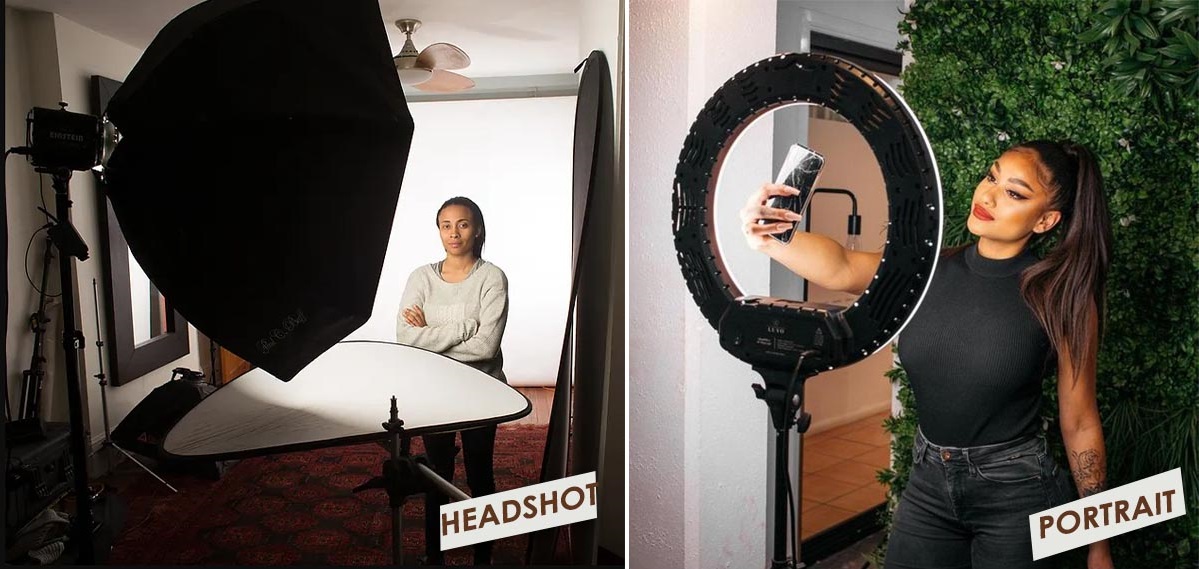
Both portraits and headshots studio backgrounds are different from the others. Headshots studio setup must look more professional, and the lighting is softened so the entire face’s focus is evenly lit. The use of an undistracted background and standard lighting will create a true-life representation of the subject.
Contrary to portraits, which frequently benefit from being in black and white, monochrome photographs seem to capture emotions in-depth. The lighting setup for portrait photography ranges from even light to a dramatic, edgy setup. If you want to add one step ahead of artistry to the image, you can place the colored plastic sheet to lighten the image beautifully.
Portrait vs Headshot: Retouching
As you know, headshots emphasize the face, but portraits may also emphasize the face or even the entire body. Portrait retouching may therefore differ slightly from headshot retouching.
Like with headshots, you must retouch the image to accurately represent the subject. Only the distracting elements should be eliminated; neither birthmarks nor beauty marks should be removed so that the photos look more professional.
With portraits, however, you need to fix any flaws and even lighten the subject’s skin tone, highlight facial structures, enhance colors, fix contrasts, adjust contours and texture to make them stand out. The bumps, blemishes, and smooth flyaway hairs can all be eliminated from both portraits and headshot retouched images.
Don’t forget to read: How to choose professional photo retoucher
Portrait vs Headshot: Pricing & Packages
Pricing for headshot photography can be a little difficult to determine. The amount of time you spend planning the shoot, preparing the studio, taking the photos, and editing them must be calculated while taking the headshots. Professional, high-quality headshots are available at affordable prices from headshot retouching services.
There are many different options available when it comes to portrait pricing packages. Just because they cover so many different styles, including creative, traditional, fine art, commercial, and many more. These types of portraits can have a significant impact on pricing packages.
FAQs of Portrait vs Headshot Photography
Are headshots considered portraits?
Definitely, the headshot is one kind of portrait, because here the subject is aware of a camera and typically looks right into the lens. The face from the shoulders up is sharply cropped in this shot.
What makes a headshot professional?
A headshot is typically taken from a very close angle, so you should be posed with your chest up, your face lit evenly, and without any overly dramatic shadows. These guidelines will help you create a professional-looking headshot.
Why is portrait photography interesting?
Portrait photography is interesting because it captures the essence of your subject artistically. But, you must have certain fundamental elements, such as the right location, lighting, composition, emotion, and technical conditions, in order for your photographs to be well-executed.
What is F-stop best for portraits?
Wider apertures between f/2.8 and f/4 are preferred in portrait photography to focus on the subject and blur the background.
Final Remarks
Thanks for persevering to the end!
I hope you’ve cleared up any confusion about the similarities and differences between portrait and headshot photography. We’ve looked over all the factors between portraits and headshots, and we’ve come to the conclusion that a portrait is used when you want people to know who you are and what you stand for, while a headshot is used to let people know how you look.
Overall, a headshot is a portrait; not all portraits are headshots.
